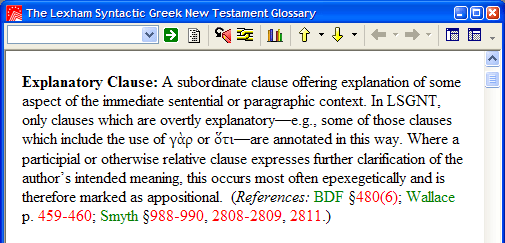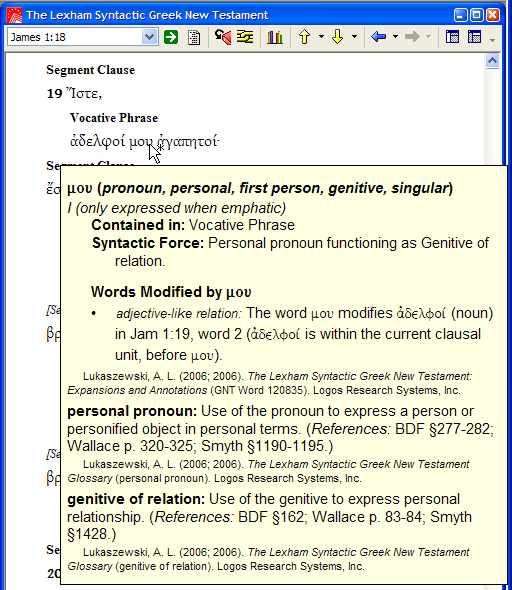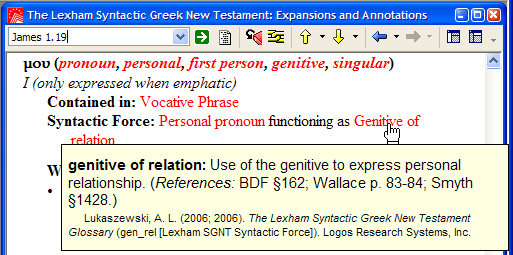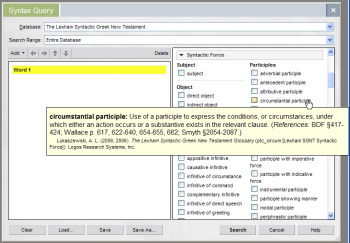I know, I know, I said I’d blog about searching the Lexham Syntactic Greek New Testament. And I will. Really, I will. But not today.
I’ve been working on a different aspect of the Lexham Syntactic Greek New Testament project recently: adding glossary information to just about everywhere a clause type or syntactic force note occurs. And wow, is it cool. Really.
Because syntactic terminology is at times confusing, and because different grammars and guides sometimes use the same terminology to describe different things and different terminology to describe similar things (got that?) we knew we’d need to include glossaries with our syntactic databases. And we also knew we’d need to provide links to further discussions of terms in standard grammar and syntactic references, so we’ve included (where appropriate) links to BDF, Daniel Wallace’s Greek Grammar Beyond the Basics, and Smyth’s Greek Grammar (a classical grammar not yet in LDLS format … but give us time!).
Entries end up looking something like the below:
The entries are short; they rely on the cited references to provide detail and nuance. They’re not meant to be comprehensive, they’re meant to provide the basics in a “large brush” sort of way. And they end up showing up everywhere. Here’s an example of the Lexham SGNT proper; the clause-hierarchy view of the New Testament. The mouse cursor is simply hovering a word; the popup is automatic, based on keylink preferences. The entry from the Expansions and Annotations resource along with glossary entries for the syntactic force notes that the word specifies in this instance are visible:
But that’s not all. If you are in the Expansions and Annotations resource, the glossary definitions are available as well:
Note that all of the red text in the above graphic is linked to a glossary of some sort. Morphological terminology is linked to a morphology glossary; other terminology is linked to the Lexham SGNT Glossary. The raw information, plus brief explanations of the terms used, is available from a click or hover.
This shows up other places too. What if you’re in the Syntax Search dialog, specifying a query, and don’t recall what a circumstantial participle is? Well, it just pops up on hover, reminding you:
We’re trying to make sure that syntax terminology, where it occurs in these resources, is easy to define. It can be done by hover, or by keylinking from the reference to the Lexham SGNT Glossary. And we’re not only doing this with the Lexham SGNT project; similar functionality will be available from both the Andersen-Forbes syntactic analysis and the OpenText.org Greek New Testament as well. The glossary functionality, implemented in the Lexham Syntactic Greek New Testament, is available in the current beta. Glossary functionality will be introduced with other syntax databases in future beta versions.








